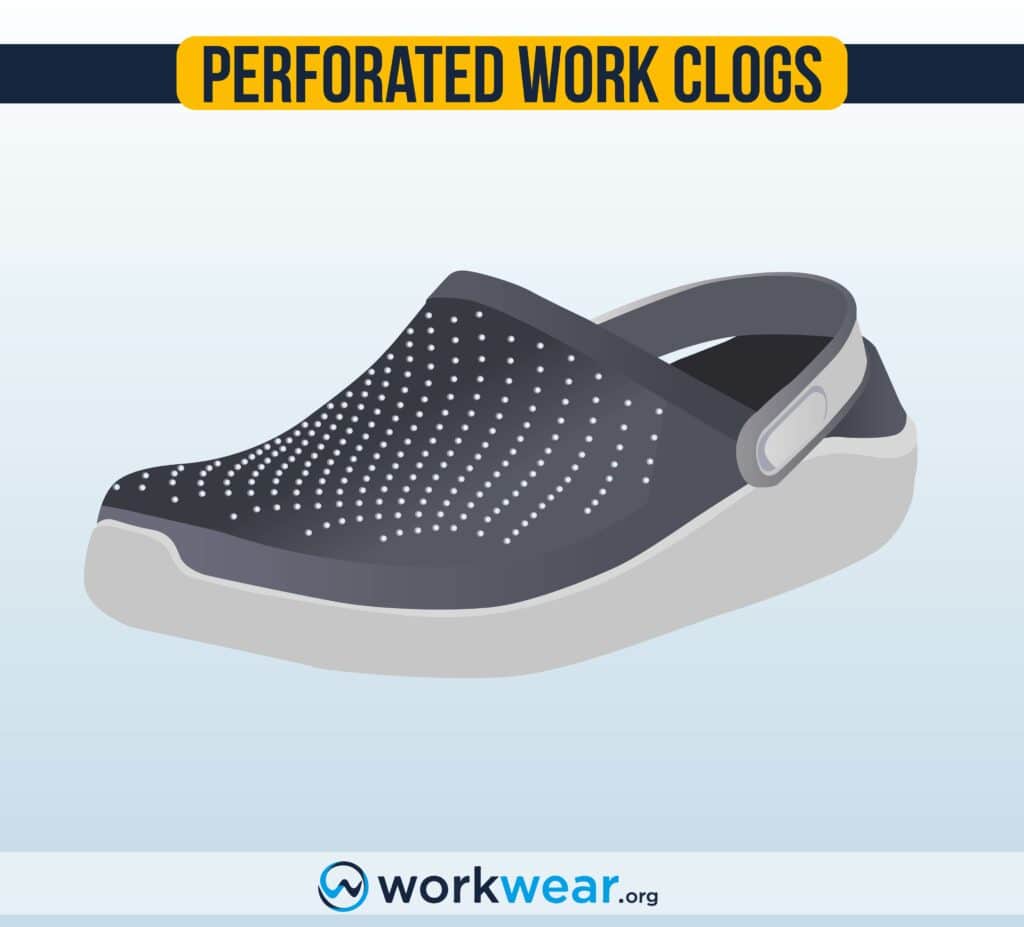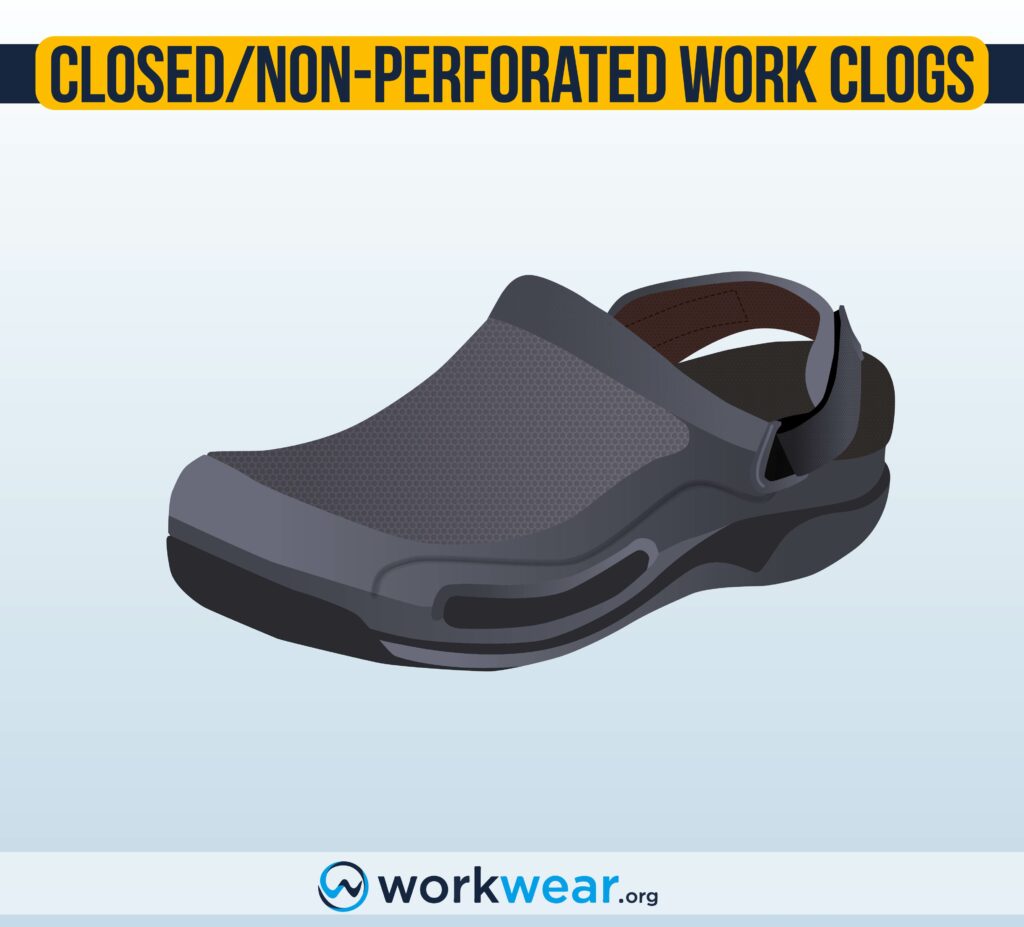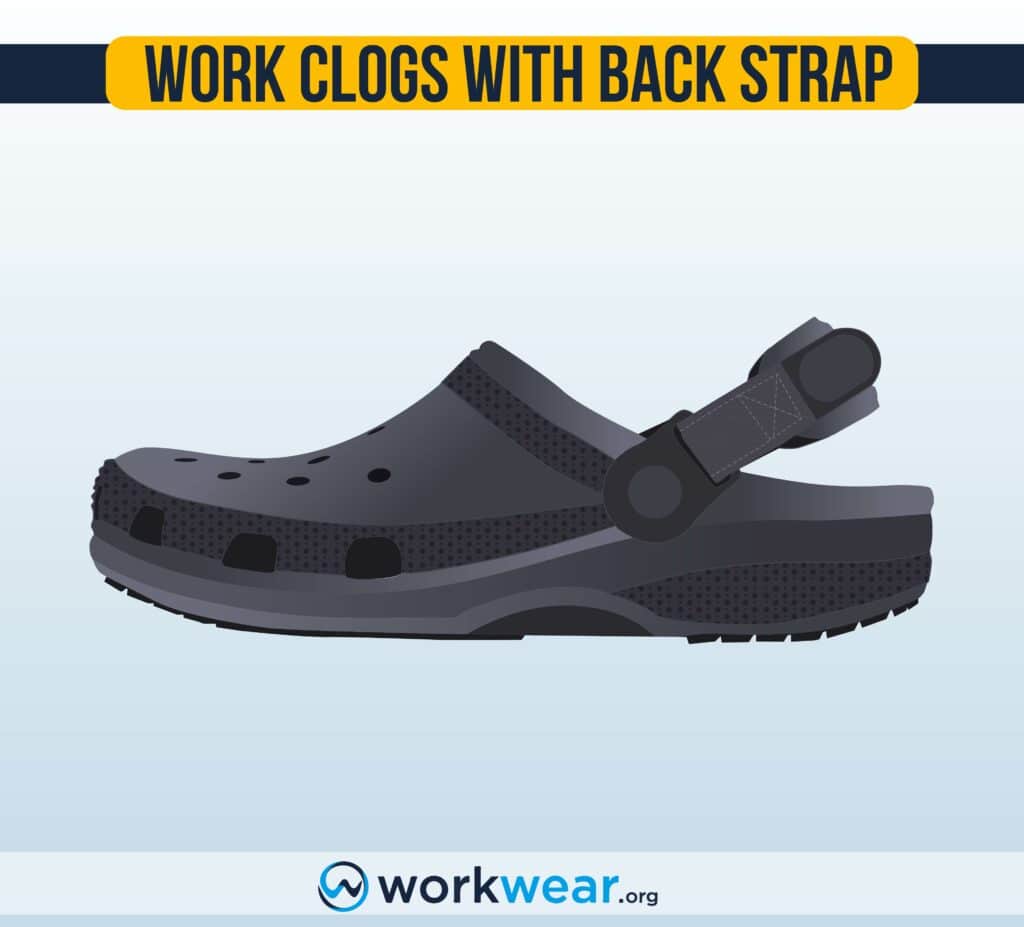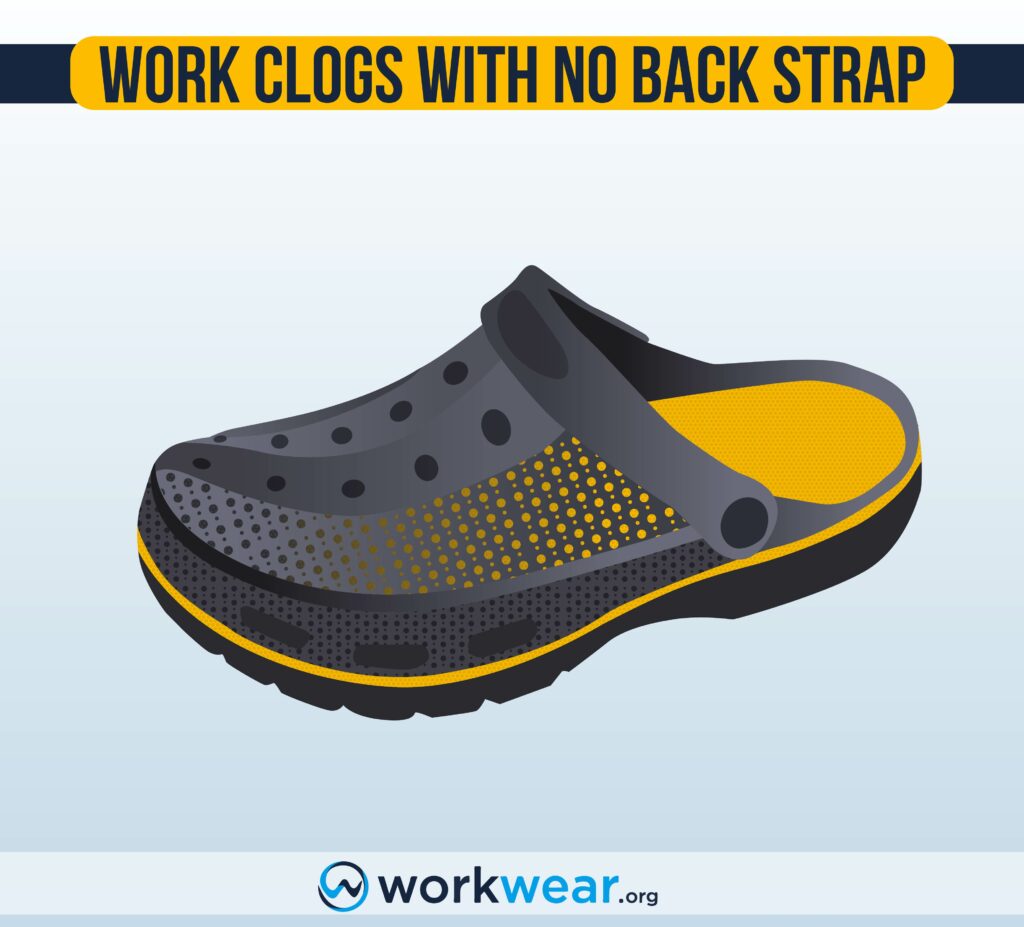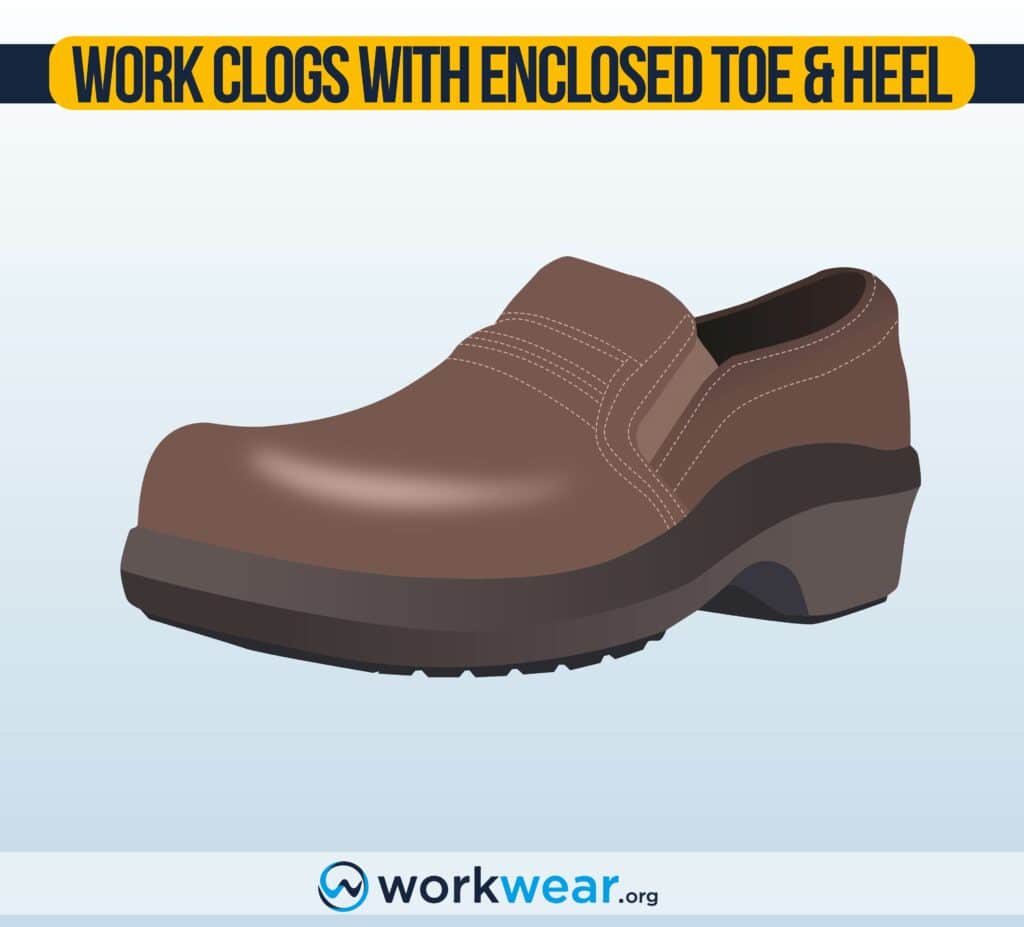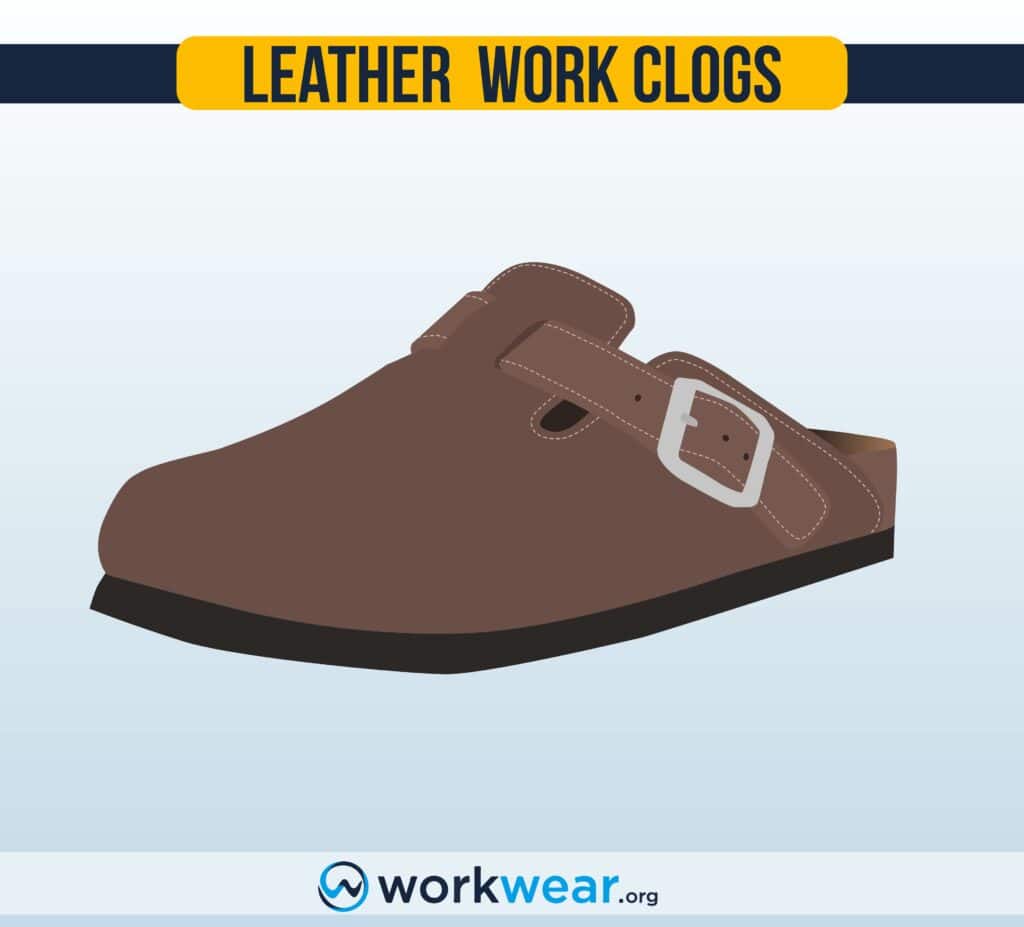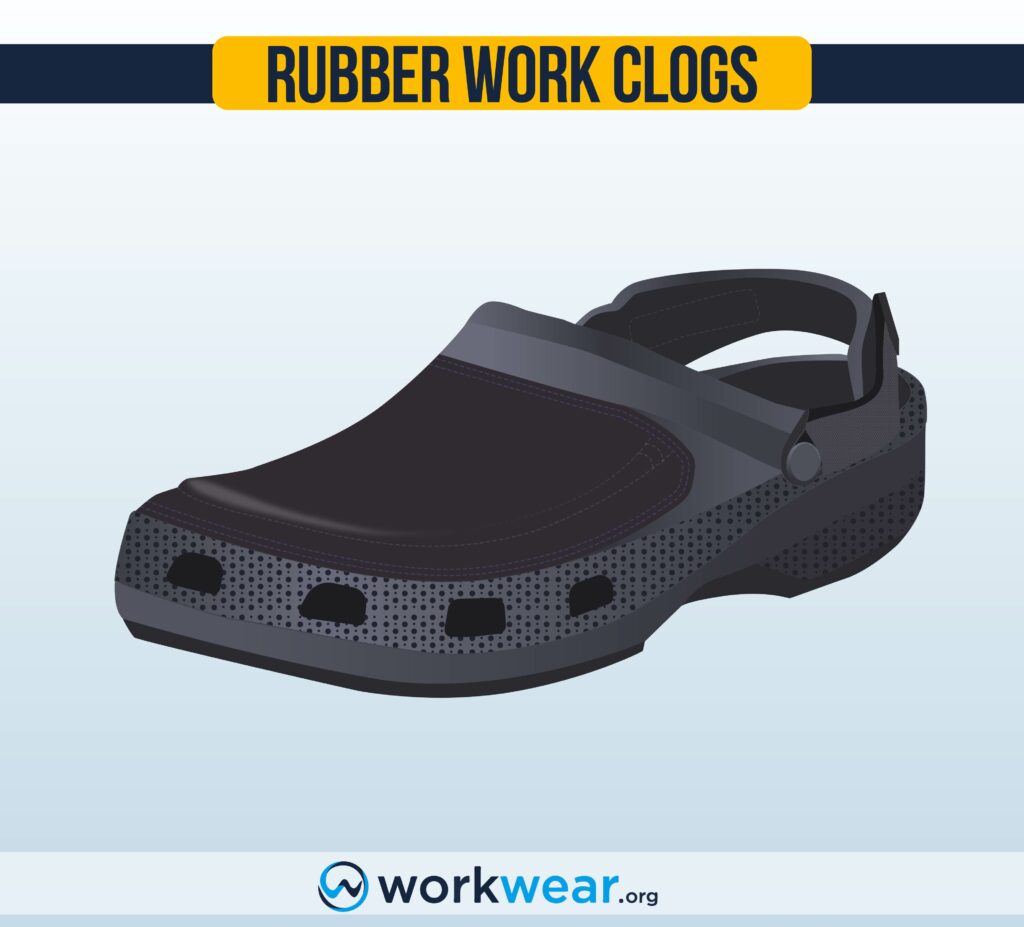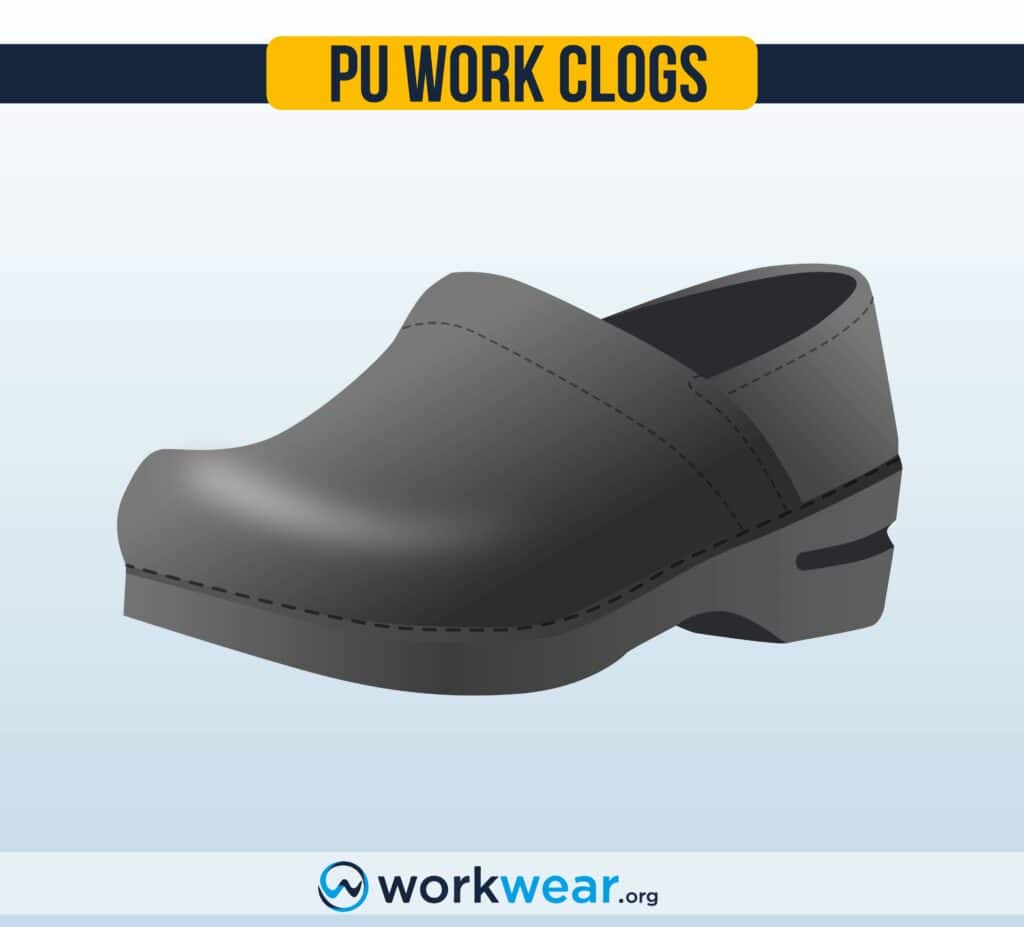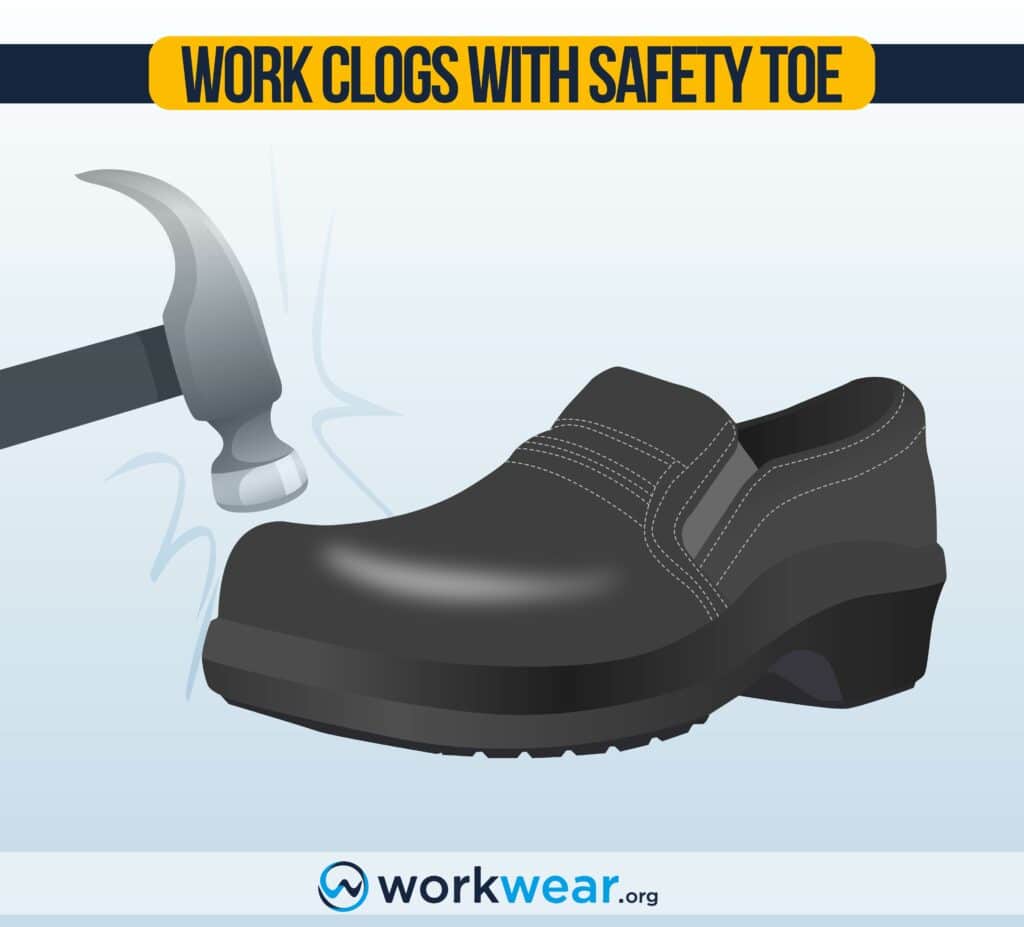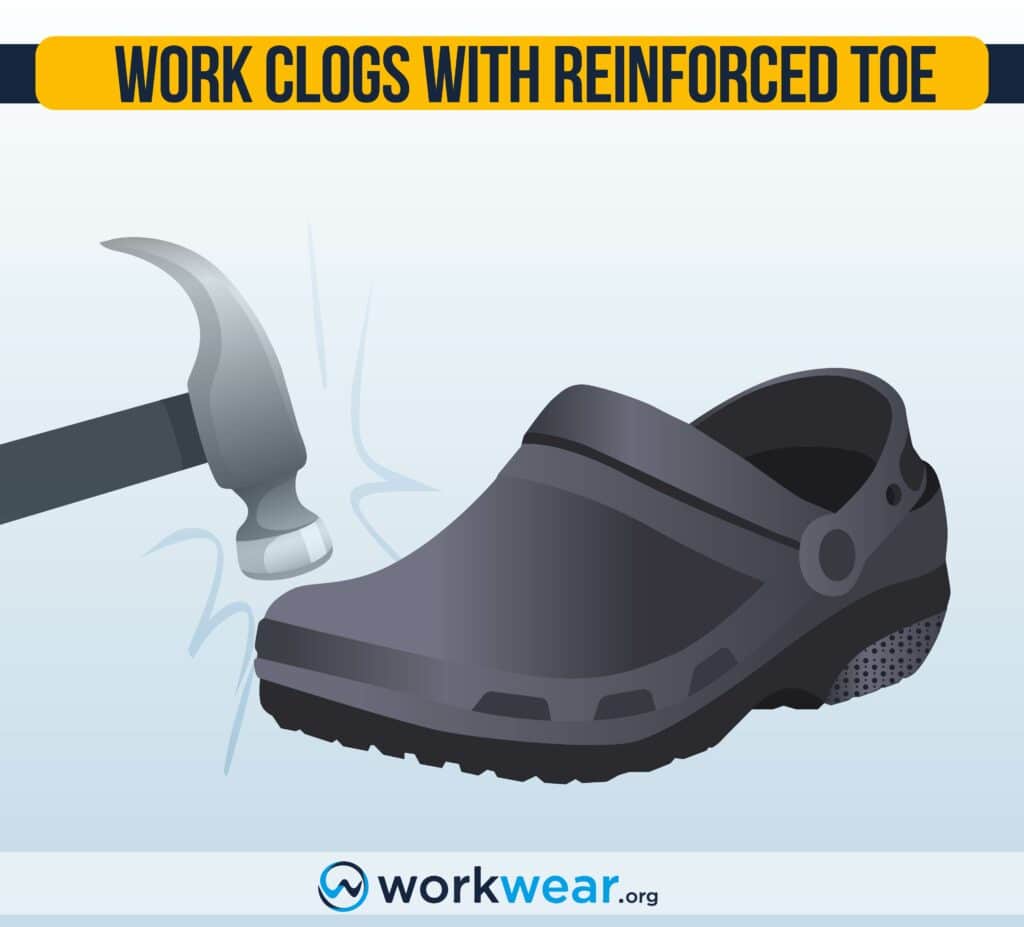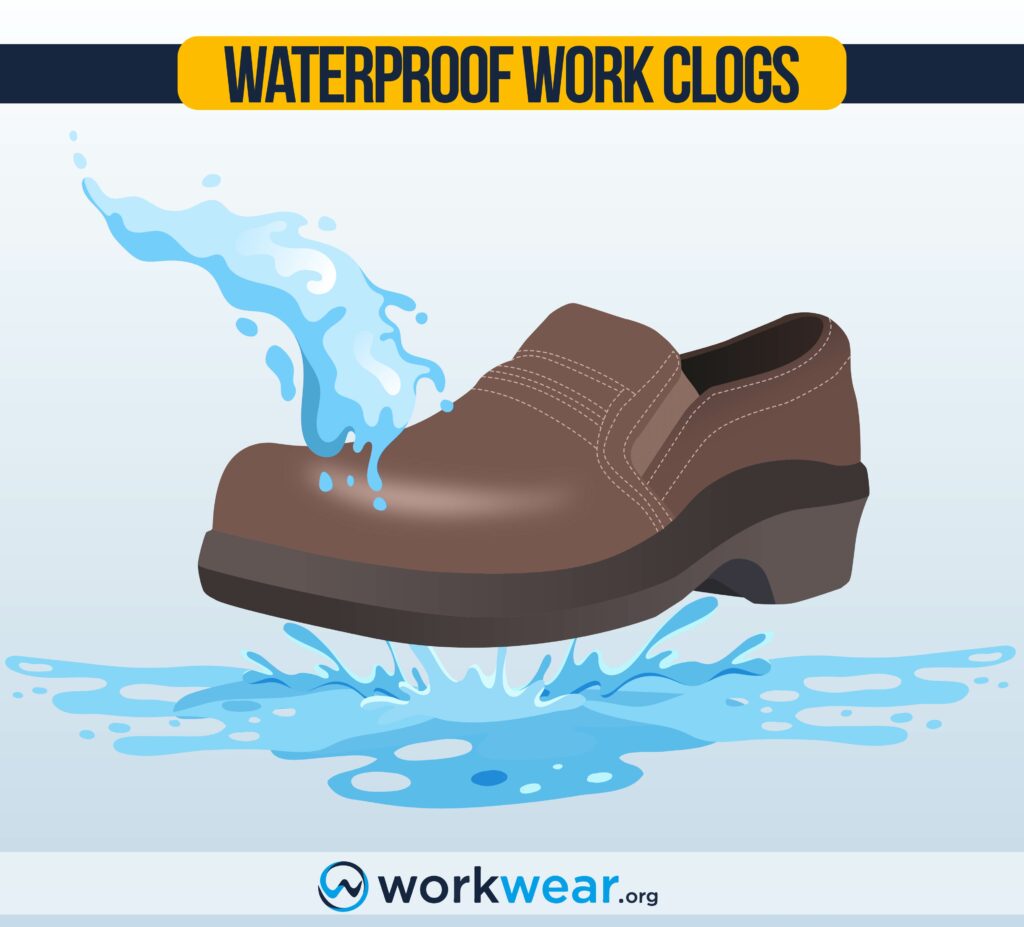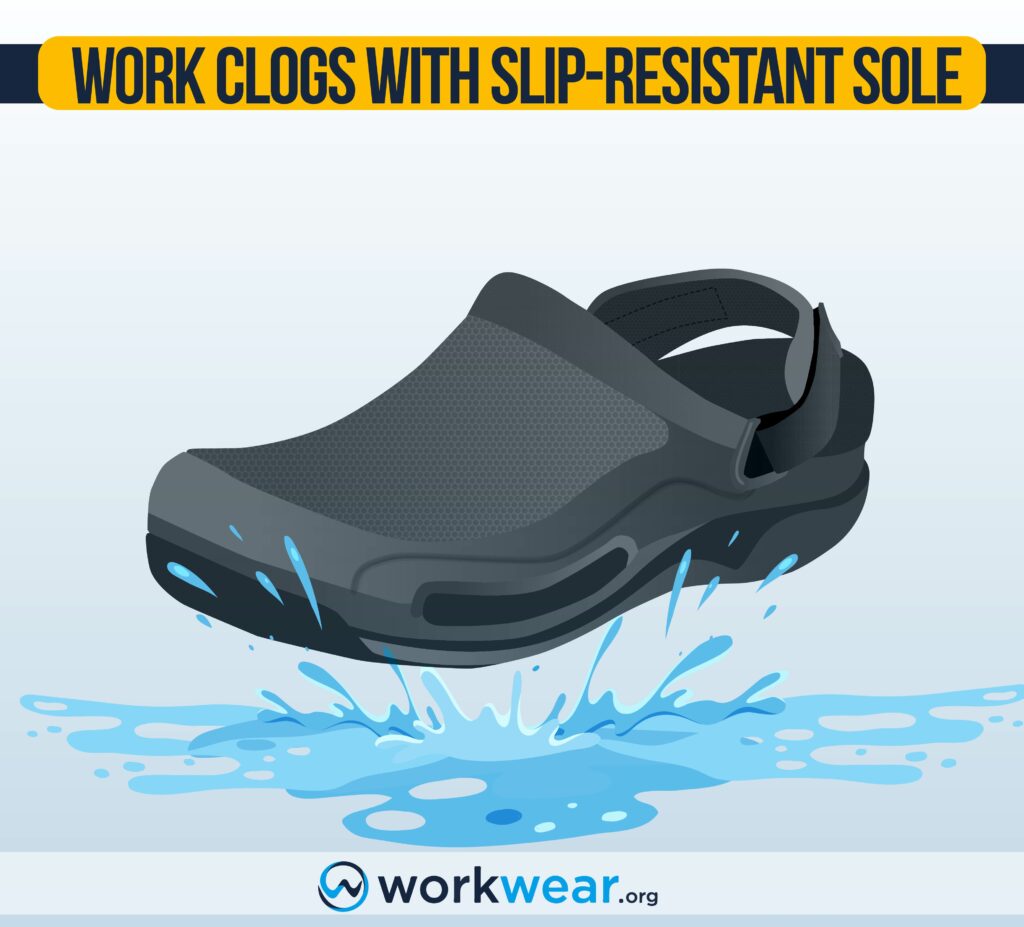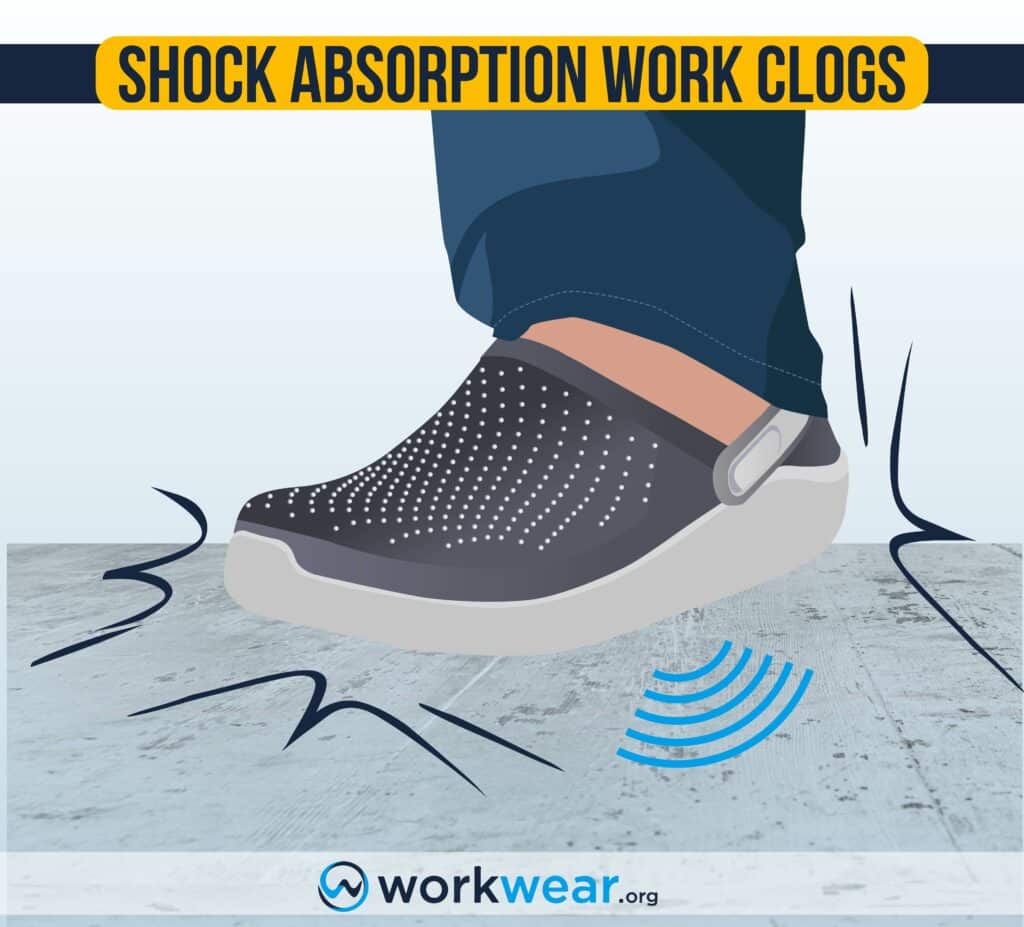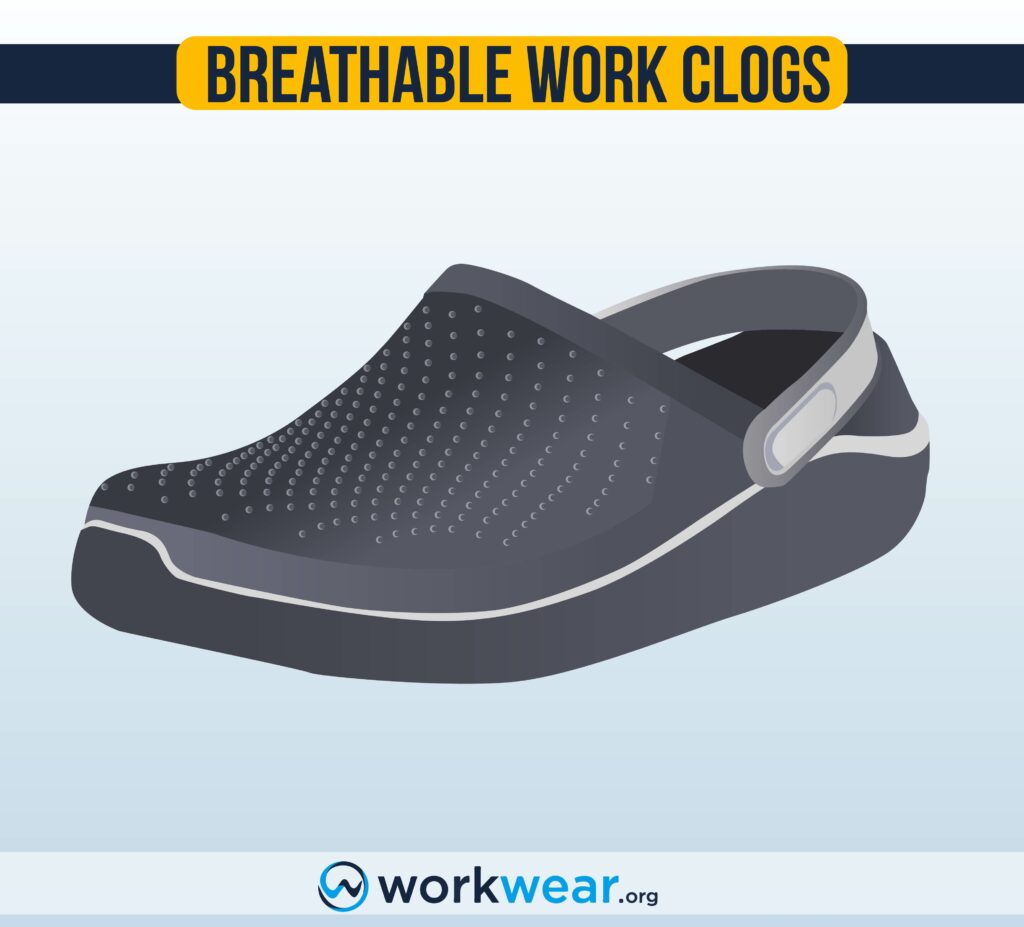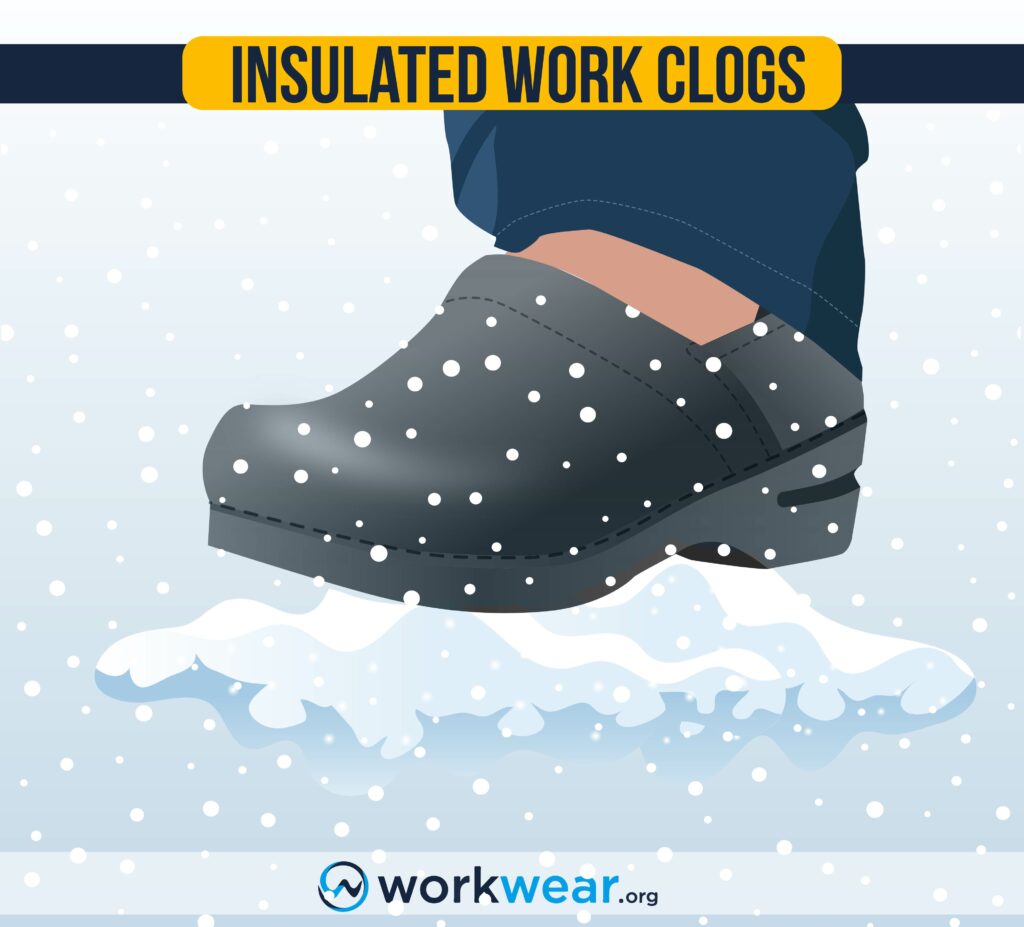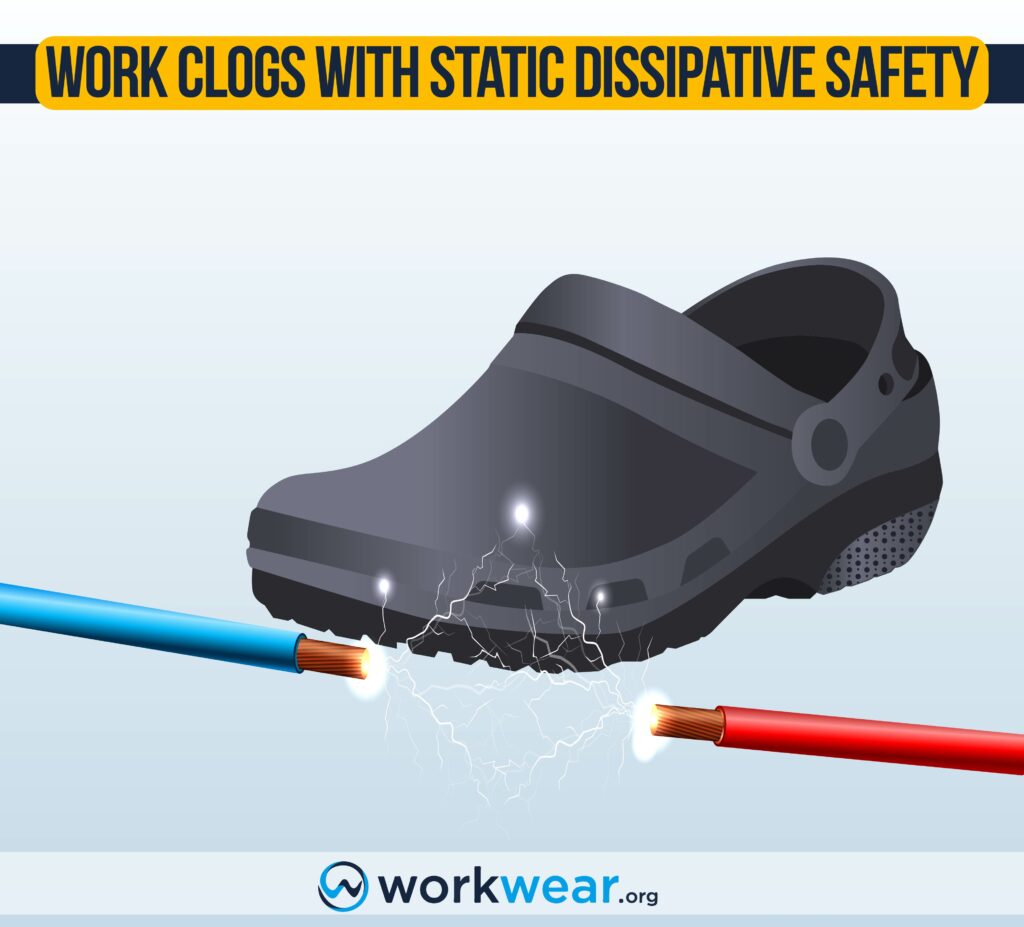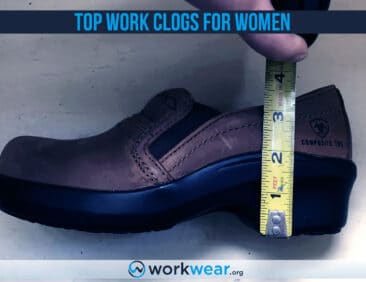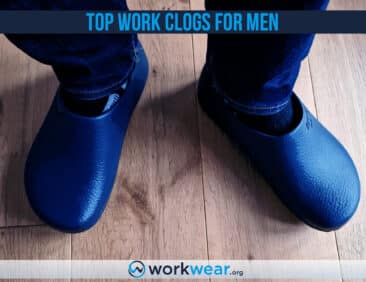Types of Work Clogs: Exploring Materials, Features, and Benefits for Different Work Environments
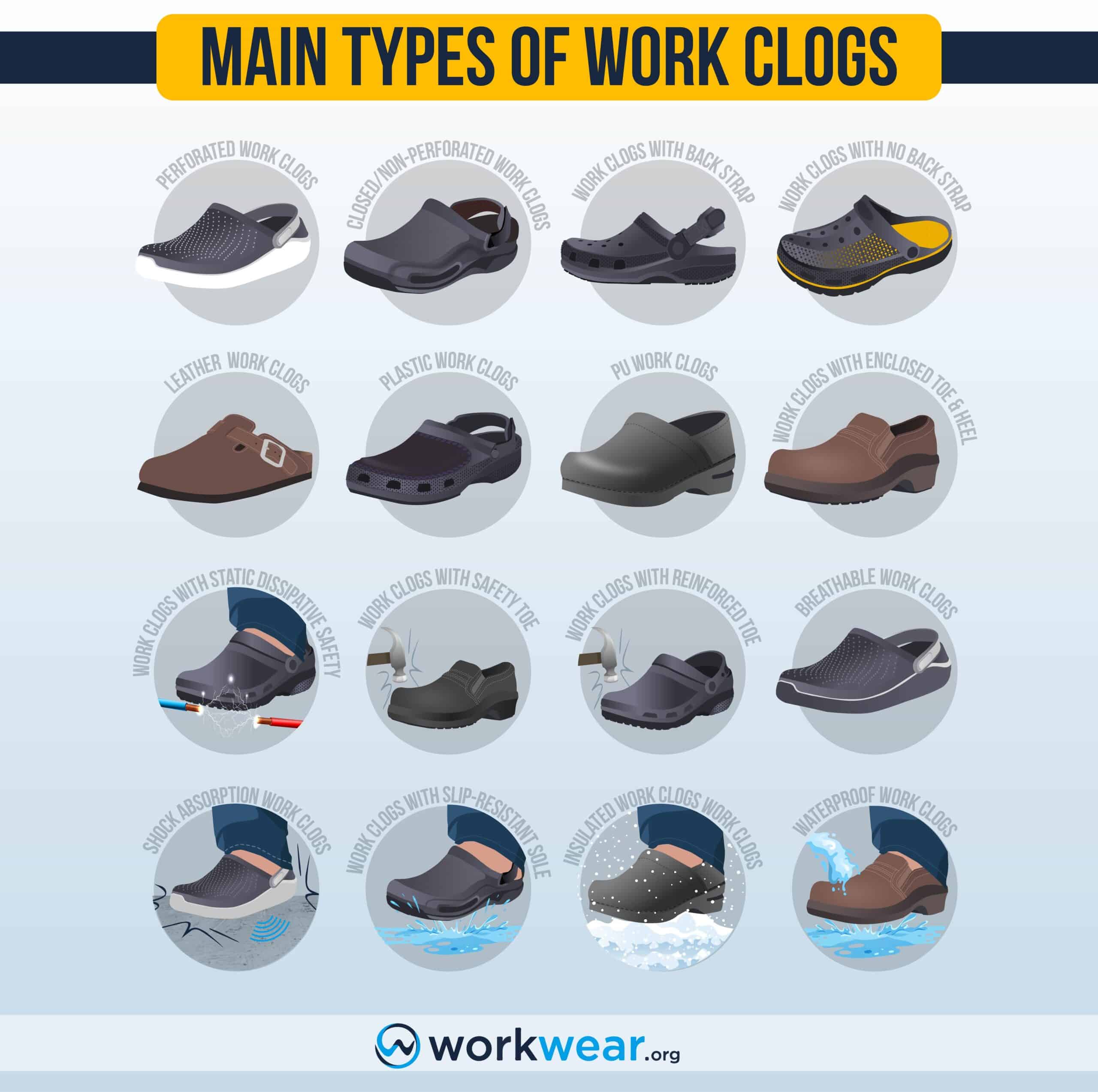
When it comes to choosing footwear for work, clogs may not be the first style that comes to mind. However, work clogs can be surprisingly functional in certain job environments, especially in the kitchen, food service, and medical/healthcare industries.
Unlike the classic laidback clogs you wear for lounging or running quick errands, work clogs are designed to provide support and comfort for the feet in professional settings. These shoes are built to withstand long hours of standing or walking, just like other styles of work shoes.
In this article, we’ll explore the various styles, materials, and features that make work clogs a great choice for enhancing overall function and safety in the workplace. Whether you’re looking for slip-resistant soles, easy-to-clean materials, or a stylish design, there’s a work clog out there that can meet your needs.
Types of Work Clogs Based on:
Design
Work clogs already have distinctive silhouettes but still come in different designs.
Aside from giving unique looks to the clogs, the varying styles also have their own functional merits and disadvantages.
The design can affect how the clogs work in specific job environments, so it’s crucial to consider what the job involves – and the work settings – when choosing among the different work clog designs.
Perforated
Work clogs – such as the Crocs LiteRide Clog – can come with perforated upper sections.
The holes aren’t just for decoration – they also have a functional benefit as they keep the air moving freely throughout the clogs.
The perforations also make it easier for moisture to dissipate quickly, preventing heat and sweat from building up inside the footwear. The perforations can range from tiny ones to larger ports, often built into the sides to aid in liquid drainage.
The downside to the holes is that they become gateways for liquids to seep into the clogs.
Pros
- Encourages more air to come in
- Allows fast heat and moisture evaporation
- Holes work as accents on the clogs’ structure
Cons
- Liquids can easily get in
Closed/Non-Perforated
Work clogs are also available in designs featuring a fully closed upper with no perforations, as seen with the Crocs Bistro Pro LiteRide Clog.
This design looks more streamlined and protects the feet against uncomfortable wetness in case liquids are accidentally spilled while on the job.
Without perforations, these clogs also prevent tiny debris from getting in, so the small unwelcome objects won’t poke the feet. The non-perforated designs will also keep the feet clean longer because dirt is prevented from coming in.
Pros
- Blocks liquids to keep the feet comfortably dry
- Stops tiny debris from entering the clogs
Cons
- More prone to overheating without perforations
With Back Strap
Back straps are stapled features in a lot of casual and work clogs.
They help secure the feet, so they won’t easily slide inside the clogs with every step.
This results in better walking stability, especially in tricky surface conditions. The strap also prevents the heel from slipping out of the clog for more comfortable use. This strap can have the same color and material as the rest of the clog’s structure, but it can also be made with contrasting colors and materials – such as the one on the Crocs Classic All Terrain Clog.
If the strap is adjustable, it can also help customize the clog’s fit for enhanced comfort and stability.
Pros
- The strap keeps the foot secured inside the clog
- It prevents the heel from slipping out of the clog
- Straps with varying colors work as accents
- Adjustable straps can help personalize the clogs’ fit
Cons
- Straps may sometimes restrict the foot’s motion
- It can cause chafing if the strap isn’t adjustable
No Strap
Work clogs with no straps offer the ultimate wearability and convenience.
They take almost no time to put on since there are no laces or straps to adjust with each use. They generally feel more spacious and allow the toes to spread more naturally than more streamlined designs.
Without back straps, the feet can enjoy a wider range of motion as there are no straps that can limit movement, translating to improved comfort and ability.
Pros
- Spacious interior
- Very easy to slip into
- Allows the feet to move more freely
Cons
- Feet can slide inside the clog, causing an unstable feeling
- The heel can slip out of the clog while walking
Enclosed Toe & Heel
Work clogs with enclosed toe and heel areas look more like regular work shoes than traditional clogs.
They also have a lace-free, slip-on design that feels more stable as the heel is secured. Since they look more like ordinary shoes, work clogs with enclosed toes and heels can be used in more work environments – even where traditional clogs are considered too informal. This is especially true for work clogs made with leather, such as the Ariat Women’s Expert SD Composite Toe Safety Clog.
The enclosed style offers enhanced coverage to protect the feet against wetness and debris on the job site.
Pros
- Secures the heel in place
- Protects the feet against liquids and debris
- Suitable for casual and more formal job environments (depending on the material)
Cons
- Not as spacious as other clog designs
- It can restrict the feet’s motion
- Not as breathable as other clogs
| Design |
For What Work Conditions |
Key Features |
|---|---|---|
| Perforated Upper |
|
|
| Non-Perforated Upper |
|
|
| With Strap |
|
|
| No Strap |
|
|
| Enclosed Heel & Toe |
|
|
By Material
The materials used directly affect the work clogs’ appearance and performance.
The different materials used also have strengths and weaknesses that give the work clogs distinct characteristics.
It’s a good idea to check each material’s attributes to ensure that the work clogs you choose to suit your job condition and other personal preferences.
Leather
Leather is a reliable work shoe material, which also applies to work clogs.
It’s stronger and more durable than textile uppers, making leather work clogs perform better for longer.
The material also has a natural resistance to liquids, protecting the feet against minimal spills. The leather uppers of work clogs typically look sleeker than those made with other materials, giving the clogs -such as the Birkenstock Tokio Super Grip Clog – a more professional look.
Real leather can follow the foot’s shape over time, so leatherwork clogs will become even more comfortable the more frequently used.
Pros
- Strong and durable
- Natural resistance to moisture
- Sleeker, more professional appearance
- Conforms to the foot’s shape over time
Cons
- We may need a break-in period
- Typically, more expensive than other materials
- Cleaning and maintenance can involve a lot of steps
Rubber
Rubber work clogs are very convenient to wear not only because of their slip-on designs but also because of their flexibility. They readily follow the feet’s motion for superior agility and comfort.
Rubber has strong moisture resistance, so non-perforated clogs can keep the feet dry for much longer in wet work conditions.
Work clogs made with rubber are very easy to clean and maintain – they can be washed off with water at the end of a shift and left to dry without other meticulous steps to follow.
They’re also durable and won’t deteriorate quickly even when they’re used in heavy rotation while doing physically taxing activities.
Pros
- Flexible
- Natural moisture resistance
- Low-maintenance use
- Durable
- Typically, affordable
Cons
- Without perforations, prone to overheating
- Often bulky
PU
PU work clogs are tough enough to keep up with challenging work conditions.
They’re highly resistant to water, making them suitable for jobs involving exposure to wet surfaces for long periods.
The material also resists the build-up of dirt and is very easy to wash off, so maintaining the high-quality appearance and function of PU work clogs – such as the Birkenstock Profi Birki Clog – isn’t that difficult.
PU soles effectively absorb shock and have a firm grip, preventing slips on slick or uneven surfaces and preventing foot fatigue.
Pros
- Durable
- High resistance to water, grease, and oil
- Shock-absorbing and grippy soles
- Easy to clean and maintain
Cons
- Typically, expensive
| Materials |
For What Conditions |
Key Features |
|---|---|---|
| Leather |
|
|
| Rubber |
|
|
| PU |
|
|
Toe Structure
Like other work shoes, work clogs can come with different toe structures suitable for equally variable purposes and work scenarios.
The way the toe box and upper are designed will significantly impact toe safety and comfort, directly affecting how the feet will move or perform on the job.
Safety Toe
Safety toes may be more common in work shoes and boots, but they can also be found in some work clogs – such as the Ariat Women’s Expert SD Composite Toe Safety Clog.
The toe caps are fitted in to make the clogs safer to use in challenging work environments with heavy tools, materials, and machinery that can accidentally and forcefully land on the feet.
The safety toe caps can also protect the toes in case something heavy – such as a vehicle’s wheels – unintentionally roll over the clogs.
Pros
- Blocks heavy falling items
- Shields the toes against large rolling objects
Cons
- It can make the clogs heavy
- It can have a negative effect on the clogs’ roomy interior
- Often increases the clogs’ price
Reinforced Toe
Work clogs with reinforced toe areas offer medium protection against objects that can accidentally drop on the feet. The reinforcement may come from the thicker toe and metatarsal sections – such as those featured in the Crocs Specialist 2 Vent Clog.
The reinforced areas form an extra barrier against impact and compression threats so that the toes won’t be seriously injured in case of exposure to the said risks.
Pros
- It offers an additional layer of protection over the toes
- Not as heavy or bulky as safety toe caps
Cons
- Can affect the clogs’ interior fit
- Not the same level of protection as safety toes
Soft Toe
Clogs with soft toe structures generally have more lightweight profiles than their safety toe counterparts.
They easily maintain their reduced weight since no safety caps can add bulk to the construction. The big fit and flexibility of the clogs are not compromised either because of the absence of protective caps on the toe box.
However, the toes are more prone to injuries if heavy items drop or roll over the clogs without protection.
Pros
- The lightweight profile is maintained
- It doesn’t negatively affect the clogs’ flexibility
Cons
- No toe protection against dangerous compression or impact
| Toe Structure |
For What Conditions |
Key Features |
|---|---|---|
| Safety Toe |
|
|
| Reinforced Toe |
|
|
| Soft Toe |
|
|
Feature Enhancements
Work clogs are spacious and comfortable, but they are not the only features you can look forward to in these work footwear options. Work clogs can have several structural enhancements fitted in to keep up with the professional settings for which they’re designed.
These features may be added to boost comfort, safety, stability, and other aspects for a much-improved performance in various workplace scenarios.
Waterproof/Water Repellent Structure
Work clogs made with waterproof or water-repellent materials can be relied on to block liquids so they don’t have a chance to seep in.
The strong liquid resistance ensures that the feet will stay comfortably dry for a longer period while working in areas exposed to water and other sources of moisture.
Waterproof or water-repellent materials also protect the interior of the clogs from becoming soaked, which can lead to damage and bacterial growth.
Pros
- It keeps the feet dry
- Protects the insole and clog interior from becoming soaked
Cons
- It may negatively affect the clogs’ breathability
Slip-Resistant Sole
Work clogs with slip-resistant soles are a must when working in areas where the floors or ground are quite tricky to navigate.
These clogs have outsoles delivering a high level of traction to keep the feet planted firmly on the ground, making walking easier and safer on challenging surfaces.
They can greatly minimize the risk of slipping or falling in slick, greasy, sloped, or uneven ground conditions that may be unavoidable in some work areas, such as busy professional kitchens.
Pros
- It prevents slipping on tricky surfaces
- Improves walking stability
Cons
- Can increase the product’s price
Shock Absorption
Work clogs may be built with shock-absorbing features, helping stop fatigue from developing over long hours of walking or standing on the job.
This enhancement is usually built into the sole or heel sections where most impact is concentrated, especially when walking in hard ground conditions.
The clogs’ soles or heels absorb the impact and disperse it, often giving a bouncy feel which makes walking more comfortable.
Pros
- Prevents foot fatigue
- Improves foot comfort after hours of walking and standing
- Often delivers a welcome bounce to each step
Cons
- Can increase the clogs’ price
Breathability
Work clogs with breathable features are ideal for hot or humid environments where the feet have a higher risk of feeling overheated.
Breathability can be delivered by perforated uppers where the air can effortlessly pass through, keeping the interior cool and fresh for longer.
The holes also allow excess sweat and heat to disperse, keeping the feet dry even with non-stop walking in high-temperature work surroundings.
Pros
- Lets in more air to promote a fresh, cool feeling
- Allows moisture and heat to disperse quickly
- It prevents a sweaty, overheated feeling
Cons
- Holes allow liquids to get into the clogs
- Small debris can also pass through the perforations
Insulation
Insulated work clogs deliver the warmth the feet need for enhanced comfort and performance in cold surroundings.
They can be built with materials including a fleece or faux fur lining – such as that in the Crocs Classic Lined Clog – to preserve a warm interior while working in low-temperature environments. The insulated structures fight off the unbearable chill, making moving around easier and more comfortable without getting frostbitten toes.
The insulation also stops cold air from entering and enhances the comfortably snug fit of the clogs.
Pros
- Keep the feet warm in cold surroundings
- Prevent cold air from getting in
- It makes the clogs comfortably snug
Cons
- Can add to the clogs’ weight
- Often increases the price
Static-Dissipative Sole
Premium-quality work clogs can come with static-dissipative qualities to improve safety when working in areas that are prone to static electricity build-up. The static-dissipative features are often concentrated on the clogs’ soles, significantly minimizing the risk of static shock when working in environments with risks of static electricity discharges, such as those with circuit boards. This quality enhances the work clogs’ protective ability but often comes with a corresponding increase in price (compared to non-static-dissipative work clogs).
Pros
- Suitable for work areas with exposure to static electricity build-up
- Minimize the risks of static shock
Cons
- Often makes the clogs expensive
| Feature Enhancements |
For What Conditions |
Key Features |
|---|---|---|
| Waterproof/Water-Repellent Structure |
|
|
| Slip-Resistant Sole |
|
|
| Shock Absorption |
|
|
| Breathability |
|
|
| Insulation |
|
|
| Static-Dissipative Sole |
|
|
Conclusion
Work clogs are built using different materials, enhancements, and designs to keep up with the demands of varying job sites. The different options have benefits and disadvantages, which must be considered when selecting the best work clog option. Work clogs can be classified according to their styles, the materials used, and enhanced features that can address the needs of specific jobs and industries. With such varied aspects to consider, it’s crucial to establish your job’s requirements and conditions to see which work clogs will best match your needs.
FAQs
- Are safety toes necessary in work clogs?
- Not always. Work clogs are not commonly used in hazardous areas which require safety toe shoes. The clogs can also comfortably maintain lightweight profiles without metallic or composite toe caps.
- Is using work clogs in extremely wet surroundings a good idea?
- Even with waterproof or water-repellent materials, we don’t recommend work clogs for extremely wet conditions. This is because work clogs have low-profile designs allowing liquids to enter easily through the top/opening.
- Can leather work clogs be used in formal office settings?
- In general, no. Even with the leather material, work clogs still have a casual silhouette that may need to be more appropriate for formal indoor office environments.
- What’s the most comfortable work clog material?
- It depends on the clogs’ materials and how and where they will be used. Leather work clogs feel more comfortable as time passes because they eventually take on the shape of the feet for a customized fit. However, they’re not the best bet for out-of-the-box comfort since they often need to be broken in first. Meanwhile, rubber or PU work clogs are instantly flexible and supportive, but they can overheat (if they don’t have ventilation holes) and don’t offer a customized fit.
678+
Products Reviewed
24+ Years
Combined Experience
500+ Hrs
Field Testing
